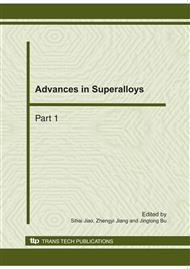p.1784
p.1788
p.1792
p.1797
p.1801
p.1806
p.1811
p.1815
p.1821
Photocatalytic Degradation of Methylene Blue Using Immobilized Nanoparticles of TiO2 Supported by SBA-15 Surface
Abstract:
TiO2-SBA-15 surface (TSS) composites were prepared by the supercritical pretreatment and then sol-gel process with using paraffin used as a clogging agent. The as-grown materials were characterized by using X-ray diffraction, UV-VIS spectroscopy and nitrogen absorption. The photocatalytic activities of TSS were evaluated by quantifying the degradation of methylene blue solution under UV light. Compared with TiO2-SBA-15 (TS) composites prepared only by the sol–gel method, TSS composites remain in mesostructure with high surface areas due to clogging effect of paraffin on SBA-15 cavity. Additionally, the small crystalline size of TiO2 in TSS is attributed to the fact that silica support baffles the agglomeration ofTiO2 nanoparticles. In comparison of TS composites and pure TiO2, higher photocatalytic activity of TSS is obtained and mainly attributed to larger surface areas and greater band-gap energy.
Info:
Periodical:
Pages:
1801-1805
Citation:
Online since:
October 2010
Authors:
Keywords:
Price:
Сopyright:
© 2011 Trans Tech Publications Ltd. All Rights Reserved
Share:
Citation:


